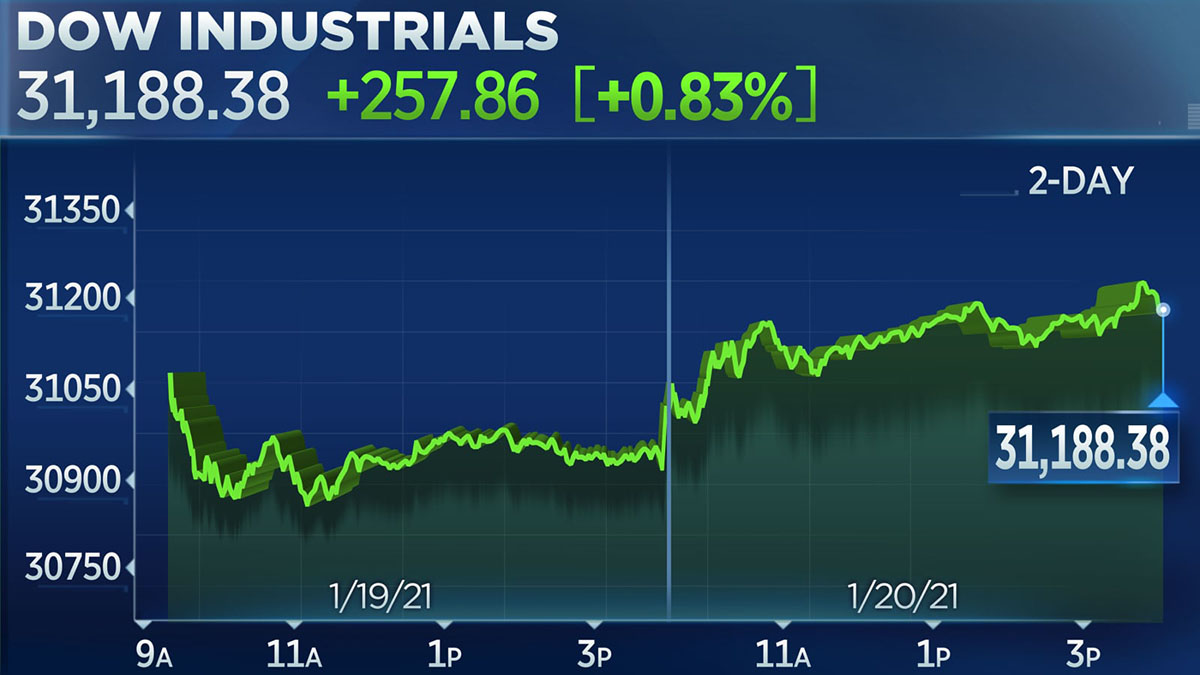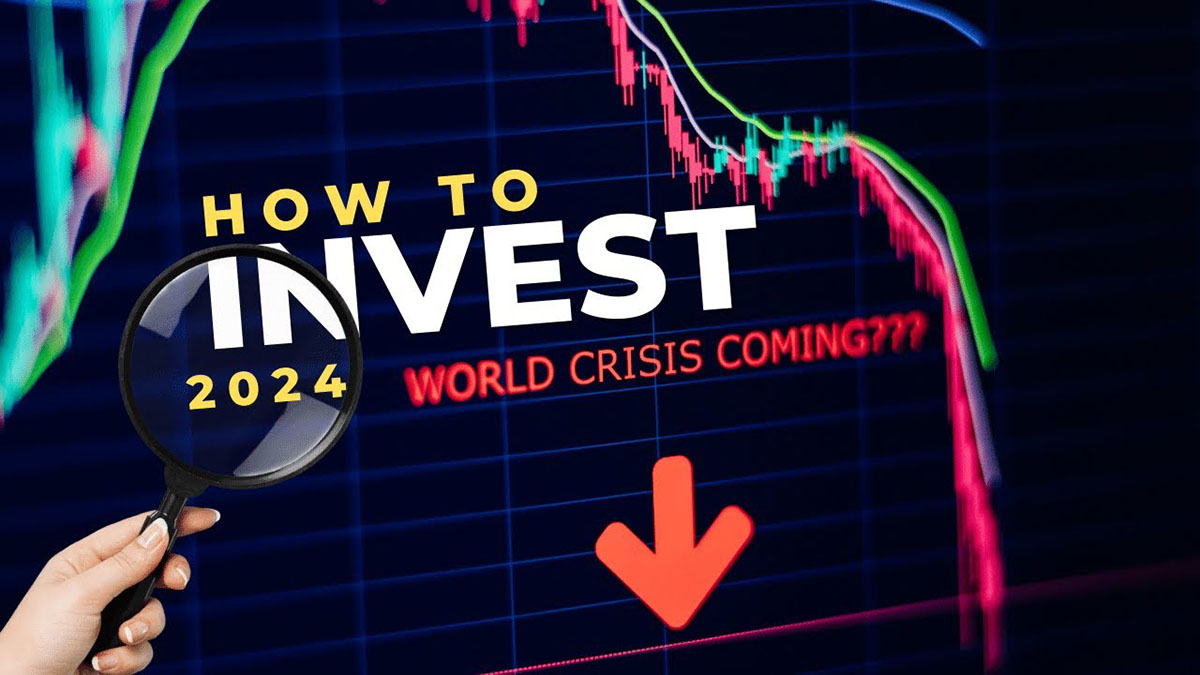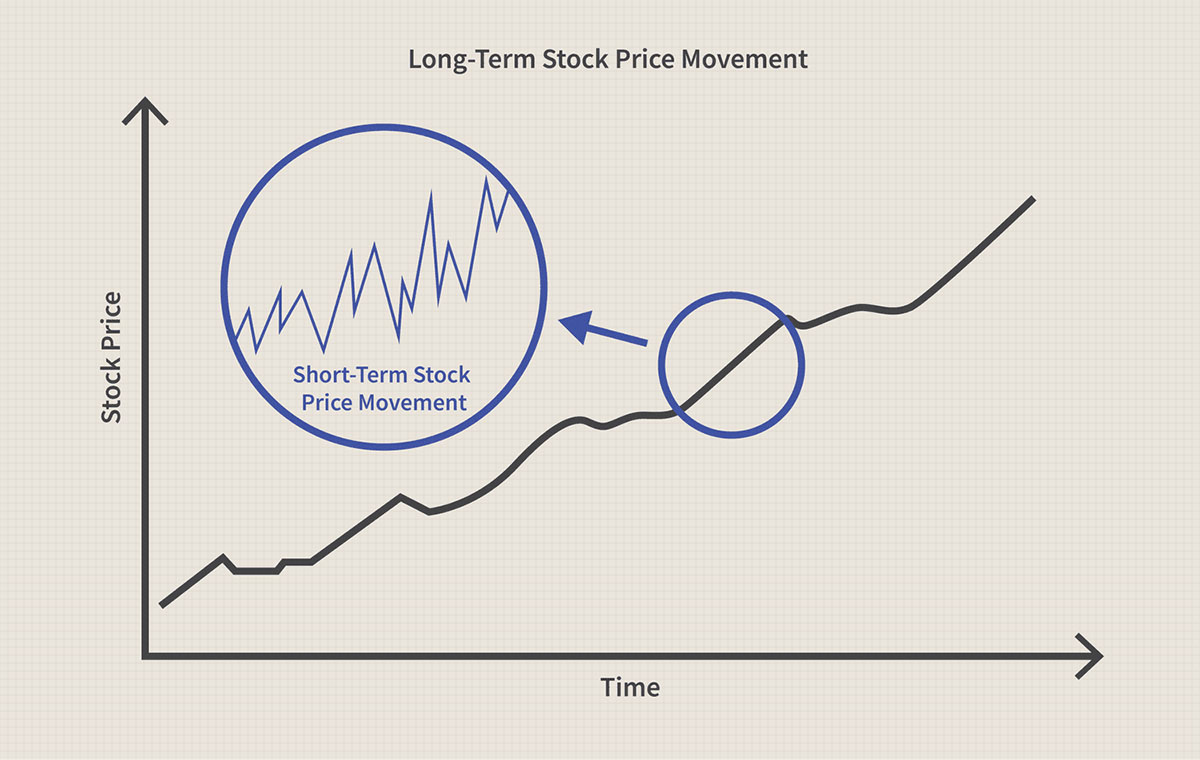Home>Finance>How Stock Market Performed When Biden Took Office


Finance
How Stock Market Performed When Biden Took Office
Published: October 20, 2023
Discover how the stock market fared after Joe Biden's inauguration. Gain insights into the financial implications of his new policies and their impact on the economy.
(Many of the links in this article redirect to a specific reviewed product. Your purchase of these products through affiliate links helps to generate commission for LiveWell, at no extra cost. Learn more)
Table of Contents
- Introduction
- Background on President Biden’s Inauguration
- Overview of the Stock Market Performance Before President Biden’s Inauguration
- Factors Influencing the Stock Market During the Transition Period
- Initial Reactions of the Stock Market to President Biden Taking Office
- Analysis of the Stock Market Performance in the First Month of Biden’s Presidency
- Comparison with Previous Presidential Transitions
- Expert Opinions on the Stock Market Outlook Under President Biden
- Conclusion
Introduction
When a new president takes office, there is always curiosity and speculation regarding the potential impact on various aspects of the economy. One area that garners significant attention is the stock market. Investors, traders, and analysts closely monitor how the stock market responds to a new president’s policies and initiatives.
Joseph R. Biden Jr. was inaugurated as the 46th President of the United States on January 20, 2021. The transition of power from the previous administration to the Biden administration brought about both anticipation and uncertainty in financial markets. Many wondered how the stock market would perform under President Biden’s leadership, particularly in light of the continued global pandemic and its economic ramifications.
In this article, we will explore and analyze the performance of the stock market during the initial stages of President Biden’s term. We will delve into the factors that influenced the stock market during the transition period and examine the market’s initial reactions to the new administration. Additionally, we will compare the stock market performance during previous presidential transitions to gain further context and insights.
By examining the stock market’s performance during the early months of President Biden’s presidency, we can better understand the dynamics at play and gain valuable insights into the potential trajectory of the stock market under his leadership. It is important to note that the stock market is influenced by a multitude of factors, including economic indicators, global events, and investor sentiment. Therefore, while the performance of the stock market during the transition period can provide valuable insights, it should not be the sole indicator of future market movements.
Now, let’s dive into the background surrounding President Biden’s inauguration and the stock market’s performance leading up to this significant moment in American history.
Background on President Biden’s Inauguration
Joseph R. Biden Jr. was inaugurated as the 46th President of the United States on January 20, 2021. The inauguration marked a significant moment in American history, as it occurred during a time of immense challenges and a divided nation. President Biden took office with the promise of bringing unity and addressing pressing issues such as the ongoing COVID-19 pandemic, economic recovery, racial inequality, and climate change.
The inauguration ceremony itself was a symbolic event that showcased the peaceful transfer of power from the previous administration to the Biden administration. Despite the pandemic and security concerns, the ceremony proceeded with limited attendance and strict health and safety protocols.
During his inaugural address, President Biden outlined his vision for the country and emphasized the need for unity and collaboration. He spoke about the importance of healing and coming together as a nation to overcome the challenges facing the country. His address also touched on key policy priorities, including tackling the COVID-19 pandemic, revitalizing the economy, addressing climate change, and advancing racial equity.
The inauguration of President Biden was closely watched by investors and market participants who were keen to understand the potential implications of his policies on the economy and financial markets. The transition period leading up to the inauguration was characterized by a mix of optimism and uncertainty as investors awaited clarity on the new administration’s policy agenda.
Now that we have provided background on President Biden’s inauguration, let us delve into the state of the stock market leading up to this historic event and the factors that influenced its performance during the transition period.
Overview of the Stock Market Performance Before President Biden’s Inauguration
The period leading up to President Biden’s inauguration was marked by a mix of economic recovery, geopolitical events, and anticipation of a new administration’s policies. Throughout this period, the stock market experienced notable fluctuations as investors weighed the ongoing pandemic, stimulus measures, and corporate earnings.
In the months preceding President Biden’s inauguration, the stock market showed resilience and underwent a remarkable recovery from the lows witnessed in March 2020 during the height of the COVID-19 pandemic. The major stock indices, including the S&P 500, the Dow Jones Industrial Average (DJIA), and the Nasdaq Composite, reached record highs as investors regained confidence in the global economic outlook.
One of the primary drivers of the stock market’s performance before President Biden took office was the unprecedented levels of fiscal and monetary stimulus implemented to combat the economic fallout from the pandemic. The CARES Act and subsequent relief packages provided financial support to individuals and businesses, boosting market sentiment and fueling recovery hopes.
Additionally, the development and distribution of COVID-19 vaccines provided further optimism as investors anticipated a gradual economic reopening. Positive vaccine news often resulted in significant market gains, specifically in sectors heavily impacted by the pandemic, such as travel, hospitality, and retail.
However, stock market performance was not without its challenges. Geopolitical tensions, such as trade disputes and political uncertainties surrounding the U.S. election, had intermittent impacts on market sentiment. The outcome of the Senate runoff elections in Georgia, which determined control of the Senate, also introduced an additional layer of uncertainty for investors.
Overall, the stock market’s performance before President Biden’s inauguration was characterized by a mix of optimism regarding a global economic recovery, thanks to stimulus measures and vaccine distribution, and cautiousness due to geopolitical factors and uncertainties surrounding the pandemic. It set the stage for investors to closely watch and interpret market reactions in response to the new administration’s policies and initiatives.
Now that we have examined the stock market performance before President Biden’s inauguration, let us shift our focus to the factors that influenced the stock market during the transition period leading up to the inauguration.
Factors Influencing the Stock Market During the Transition Period
The transition period leading up to President Biden’s inauguration was a time of uncertainty and speculation regarding the potential impact of the new administration’s policies on the stock market. Several key factors influenced the market sentiment and drove the stock market’s performance during this period.
1. Economic Recovery: The ongoing COVID-19 pandemic remained a focal point during the transition period. The trajectory of the pandemic, vaccine distribution efforts, and the subsequent economic recovery were significant factors affecting the stock market. Positive developments, such as declining case numbers and progress in vaccine distribution, brought hope for a faster recovery and boosted market sentiment.
2. Policy Expectations: Investors closely monitored President Biden’s policy proposals in areas such as stimulus measures, infrastructure spending, tax policy, and regulatory changes. Expectations of substantial fiscal stimulus and government spending had the potential to drive certain sectors of the stock market, such as renewable energy, infrastructure, and healthcare.
3. Monetary Policy: The actions of the Federal Reserve were closely watched by market participants. The central bank’s monetary policy decisions, including interest rate adjustments and asset purchases, had a direct impact on market liquidity and investor sentiment. Clarity on the Fed’s stance during the transition period provided guidance to investors in navigating market conditions.
4. Geopolitical Factors: Geopolitical events, such as trade tensions and international relations, continued to impact market sentiment during the transition period. Developments in U.S.-China trade relations and uncertainties surrounding Brexit negotiations were among the geopolitical factors that could influence the stock market’s performance.
5. Earnings Reports: The release of corporate earnings reports during the transition period provided insights into the financial health and performance of companies. Strong earnings results could contribute to positive market sentiment, while weaker-than-expected earnings could lead to market volatility.
6. Investor Sentiment: Investor sentiment, driven by a combination of market psychology, risk appetite, and market expectations, played a crucial role during the transition period. Factors such as market momentum, investor confidence, and the level of market optimism or pessimism influenced buying and selling decisions, thereby impacting the stock market.
These factors, among others, shaped the stock market’s performance during the transition period leading up to President Biden’s inauguration. As the market reacted to news and developments in these areas, investors closely monitored the implications for sectors, industries, and individual stocks.
Now that we have explored the factors that influenced the stock market during the transition period, let’s analyze the initial reactions of the stock market to President Biden taking office.
Initial Reactions of the Stock Market to President Biden Taking Office
The stock market exhibited a mixed response in the initial days following President Biden’s inauguration. The market’s reaction reflected a combination of optimism and cautiousness as investors digested the new administration’s policy priorities and assessed the potential implications for various sectors and industries.
1. Sector Rotation: In the immediate aftermath of President Biden taking office, there was a notable shift in market dynamics, with a rotation out of certain sectors. Industries such as fossil fuels and defense, which were perceived to be less aligned with the new administration’s policy agenda, experienced relative underperformance. Conversely, sectors such as renewable energy, infrastructure, and healthcare, expected to benefit from President Biden’s proposed policies, witnessed increased investor interest.
2. Stimulus Expectations: President Biden’s early focus on passing a robust fiscal stimulus package to combat the economic impact of the pandemic garnered significant attention from investors. The anticipation of further government spending and financial support injected optimism into the stock market, boosting investor sentiment and contributing to market gains.
3. Regulatory Landscape: As President Biden took office, there were expectations of potential regulatory changes in various sectors. This included increased regulatory scrutiny on industries such as technology, finance, and healthcare. Investors closely monitored any indications of potential changes in regulations and anticipated the potential impact on affected companies.
4. Market Volatility: The transition period and the days immediately following President Biden’s inauguration witnessed heightened market volatility. This volatility was a result of a combination of factors, including uncertainties regarding the policy direction of the new administration, potential market reactions to policy changes, and ongoing economic recovery concerns.
5. Global Relations: President Biden’s approach to international trade and relations had implications for the stock market’s performance. The market reacted to any indications of changes in trade policies and how they could impact global supply chains and multinational corporations.
Overall, the stock market’s initial reactions to President Biden taking office reflected a blend of optimism, sector rotation, and cautiousness as investors assessed the potential implications of the new administration’s policies. The market’s response highlighted the importance of understanding the administration’s policy priorities and their potential impacts on different sectors and industries.
Next, we will delve into a comprehensive analysis of the stock market performance in the first month of President Biden’s presidency and compare it with previous presidential transitions.
Analysis of the Stock Market Performance in the First Month of Biden’s Presidency
During the first month of President Biden’s presidency, the stock market experienced a mix of volatility and positive momentum. Investors closely tracked the new administration’s policy actions and economic indicators to gauge the market’s response to President Biden’s leadership and policy priorities.
1. Market Volatility: The stock market exhibited periods of volatility as investors adjusted to the changing policy landscape under the Biden administration. Uncertainty surrounding policy direction and potential regulatory changes led to intermittent market fluctuations. Factors such as global events, economic data releases, and investor sentiment also contributed to market volatility.
2. Stimulus Impact: The proposed $1.9 trillion COVID-19 relief package unveiled by President Biden was a key focus for investors. Expectations of substantial government spending and the potential for additional stimulus measures fueled market optimism, particularly in sectors such as technology, infrastructure, and renewable energy. Positive sentiment stemming from stimulus expectations helped drive market gains.
3. Infrastructure Plans: President Biden’s commitment to investing in infrastructure development also drove market sentiment. The prospect of increased government spending in areas such as transportation, renewable energy, and broadband infrastructure contributed to positive market performance, with related sectors experiencing increased investor interest.
4. Earnings Season: The first month of President Biden’s presidency coincided with the release of corporate earnings reports for the previous quarter. Strong earnings results from several sectors, including technology and healthcare, further boosted market confidence and contributed to market gains.
5. Global Factors: The stock market’s performance in the first month of President Biden’s presidency was influenced by global events and geopolitical factors. Developments in international trade relations, particularly between the United States and China, had implications for investor sentiment and market performance. Changes in global economic indicators and central bank policies also played a role in shaping the market’s trajectory.
Despite occasional bouts of volatility, the stock market ended the first month of President Biden’s presidency on a positive note. Key market indices experienced gains and reached new record highs during this period, buoyed by stimulus expectations, infrastructure plans, strong earnings, and optimism surrounding global economic recovery.
It is worth noting that individual stock performance varied during this period, with some companies benefiting from policy proposals and market trends while others faced challenges. As with any investment, it is important for market participants to conduct thorough research and consider their risk tolerance and investment objectives.
Next, we will compare the stock market performance during the first month of President Biden’s presidency to previous presidential transitions to provide further insights into historical market dynamics.
Comparison with Previous Presidential Transitions
Comparing the stock market performance during the first month of President Biden’s presidency with previous presidential transitions provides valuable context and insights into historical market dynamics. Market reactions can vary widely depending on the prevailing economic conditions, policy agendas, and investor sentiment during each transition period.
1. Trump Administration Transition: When comparing the stock market performance during the first month of President Biden’s presidency to the transition period of his predecessor, President Donald Trump, some notable differences emerge. During the transition to the Trump administration, the stock market experienced a significant rally driven by expectations of deregulation, tax cuts, and infrastructure spending. Trump’s pro-business agenda created an optimistic environment for investors, resulting in market gains.
2. Obama Administration Transition: The stock market performance during the transition to President Obama’s administration differed from both the Trump and Biden transitions. Barack Obama assumed office during the 2008 financial crisis, and his transition period coincided with deep market volatility and significant declines. The market was grappling with the fallout from the housing bubble burst and the subsequent global financial crisis.
3. Bush Administration Transition: The transition to President George W. Bush’s administration in 2001 also experienced a challenging market environment. The dot-com bubble burst during this period, leading to significant market declines. Additionally, the September 11 terrorist attacks further exacerbated market volatility and uncertainties.
4. Clinton Administration Transition: The transition to President Bill Clinton’s administration in 1993 witnessed a more positive market sentiment. The economy was recovering from the early 1990s recession, and Clinton’s focus on fiscal responsibility and economic growth generated market optimism. The stock market exhibited gains during this transition period.
These examples highlight that the stock market’s reaction during presidential transitions is influenced by the prevailing economic conditions, policy priorities, and global events. Each transition period has unique circumstances, which can result in different market outcomes.
It is important to note that the first month of a president’s term is a relatively short period to fully gauge the long-term market trajectory. Market reactions during this period often reflect initial sentiment and expectations, which may evolve as policies are implemented and economic realities unfold.
Next, we will explore expert opinions and market outlooks on the stock market under President Biden’s leadership.
Expert Opinions on the Stock Market Outlook Under President Biden
Experts and analysts have shared various opinions and outlooks on the stock market under President Biden’s leadership. While no one can predict market movements with certainty, these expert opinions provide insights into potential factors that may shape the market’s trajectory.
1. Fiscal Stimulus and Economic Recovery: Many experts believe that President Biden’s proposed fiscal stimulus measures and continued efforts to support economic recovery will have a positive impact on the stock market. The injection of government spending into key sectors such as infrastructure, technology, and clean energy is expected to drive growth and boost investor confidence.
2. Sector Performance: Analysts anticipate that certain sectors, such as renewable energy, healthcare, and technology, may benefit under President Biden’s policies. The focus on clean energy and efforts to expand access to affordable healthcare could create opportunities for companies operating in these sectors.
3. Regulatory and Policy Changes: Experts expect an increased emphasis on regulation and tighter oversight in sectors such as technology, finance, and healthcare. This heightened regulatory environment could lead to potential challenges for companies operating in these industries. However, some experts also argue that clear regulatory frameworks could provide stability and boost investor confidence over the long term.
4. International Trade and Relations: The approach to international trade and relations under President Biden’s administration is another factor that experts believe may impact the stock market. Any changes in tariffs, trade policies, or negotiations with major trading partners like China could have implications for global supply chains and multinational corporations, potentially affecting stock market performance.
5. COVID-19 Vaccine Distribution and Pandemic Management: The effective distribution of COVID-19 vaccines and the administration’s efforts to manage the ongoing pandemic are critical factors that experts consider for the stock market outlook. The containment of the virus and a return to normal economic activities could bolster market confidence and drive investor optimism.
It is important to remember that expert opinions on the stock market outlook are diverse, and there are many factors at play. Market conditions are influenced by numerous variables, including economic indicators, geopolitical events, and investor sentiment.
Investors should always exercise caution and conduct their own research when making investment decisions. Diversification, a long-term investment horizon, and a focus on fundamental analysis are some key principles that can help navigate the stock market under any administration.
Lastly, let’s conclude the article with a summary of the insights we have discussed.
Conclusion
The stock market’s performance during the initial stages of President Biden’s presidency was influenced by various factors, including economic recovery, policy expectations, earnings reports, and global events. The market exhibited mixed reactions, with intermittent volatility and positive momentum.
Comparisons to previous presidential transitions highlight the unique dynamics that shape market outcomes, emphasizing the importance of considering the economic context and policy priorities of each administration.
Expert opinions on the stock market outlook under President Biden’s leadership reflect a range of perspectives. Factors such as fiscal stimulus measures, sector-specific opportunities, regulatory changes, international trade, and pandemic management are key considerations for investors.
While expert opinions provide valuable insights, it is crucial to approach the stock market with caution, conducting thorough research and considering individual investment goals and risk tolerance.
In conclusion, the stock market’s performance under President Biden’s leadership will continue to be influenced by a multitude of factors. Investors should closely monitor economic indicators, policy developments, and global events to make informed investment decisions.
Please note that the stock market is inherently volatile, and past performance is not indicative of future results. It is advisable to consult with a financial advisor for personalized investment advice.
Thank you for reading this article on how the stock market performed when President Biden took office. We hope it has provided valuable insights into the dynamics at play and helped you gain a better understanding of the stock market under the new administration.














